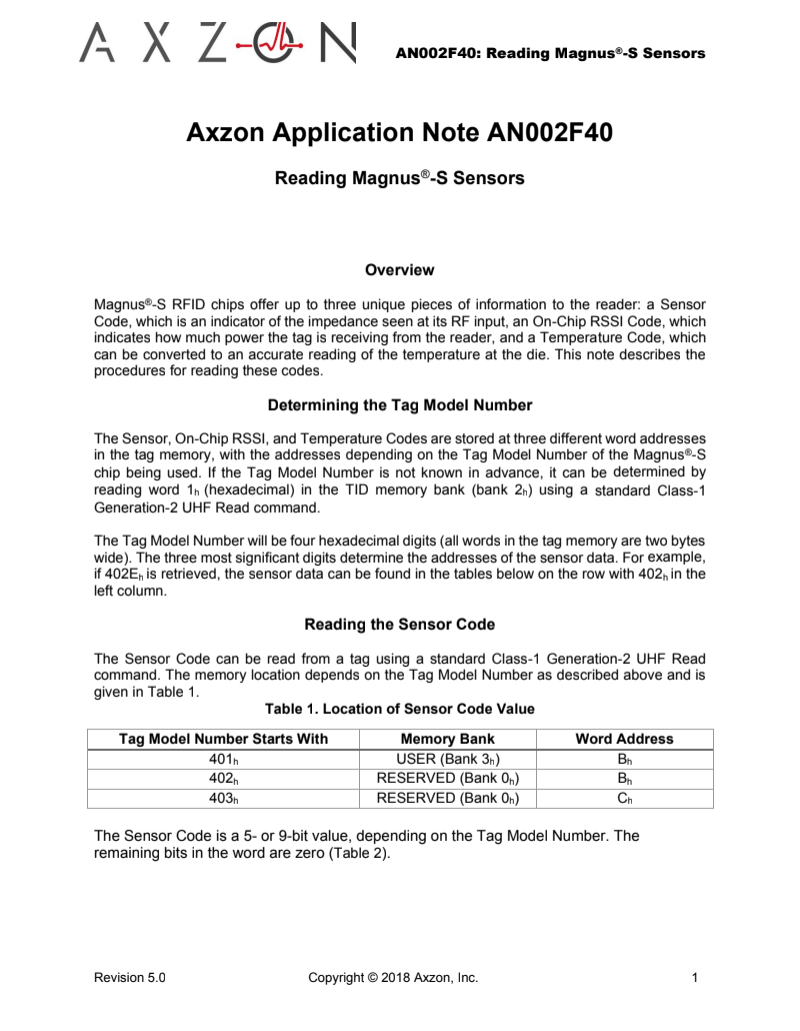
Reading Magnus®-S Sensors
AN002: Magnus®-S RFID chips offer up to three unique pieces of information to the reader: a Sensor Code, which is an indicator of the impedance seen at its RF input, an On-Chip RSSI Code, which indicates how much power the tag is receiving from the reader, and a Temperature Code, which can be converted to an accurate reading of the temperature at the die. This note describes the procedures for reading these codes.
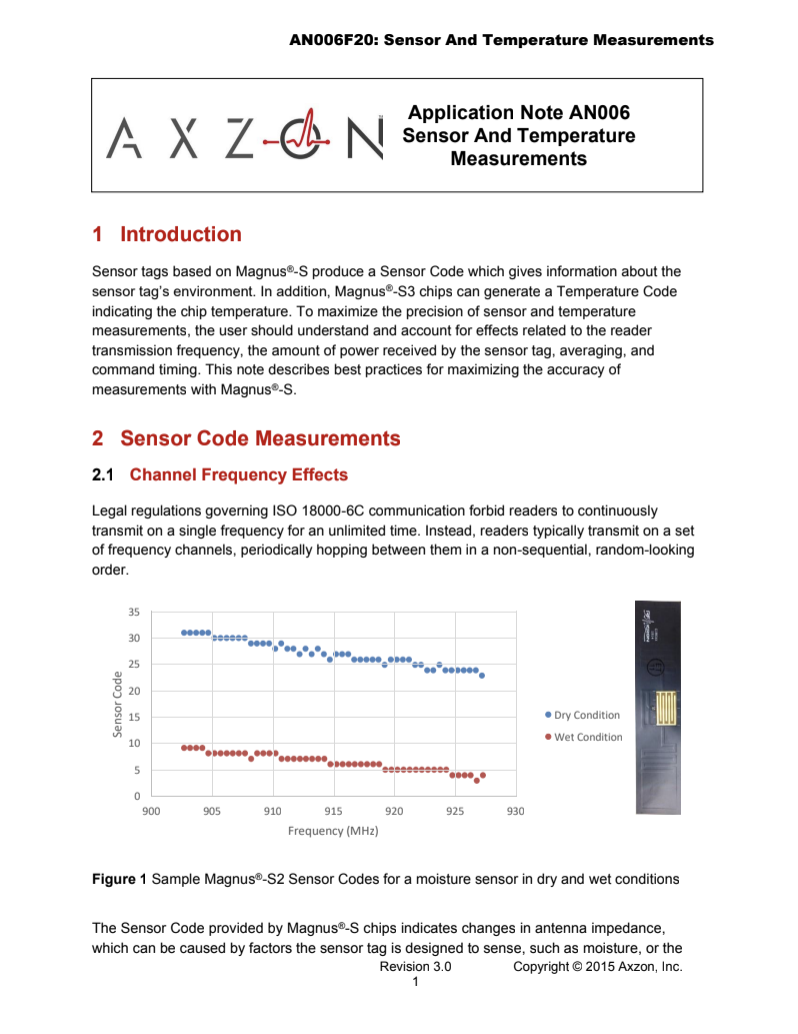
Sensor and Temperature Measurements
AN006: Sensor tags based on Magnus®-S produce a Sensor Code which gives information about the sensor tag’s environment. In addition, Magnus®-S3 chips can generate a Temperature Code indicating the chip temperature. To maximize the precision of sensor and temperature measurements, the user should understand and account for effects related to the reader transmission frequency, the amount of power received by the sensor tag, averaging, and command timing. This note describes best practices for maximizing the accuracy of measurements with Magnus®-S.
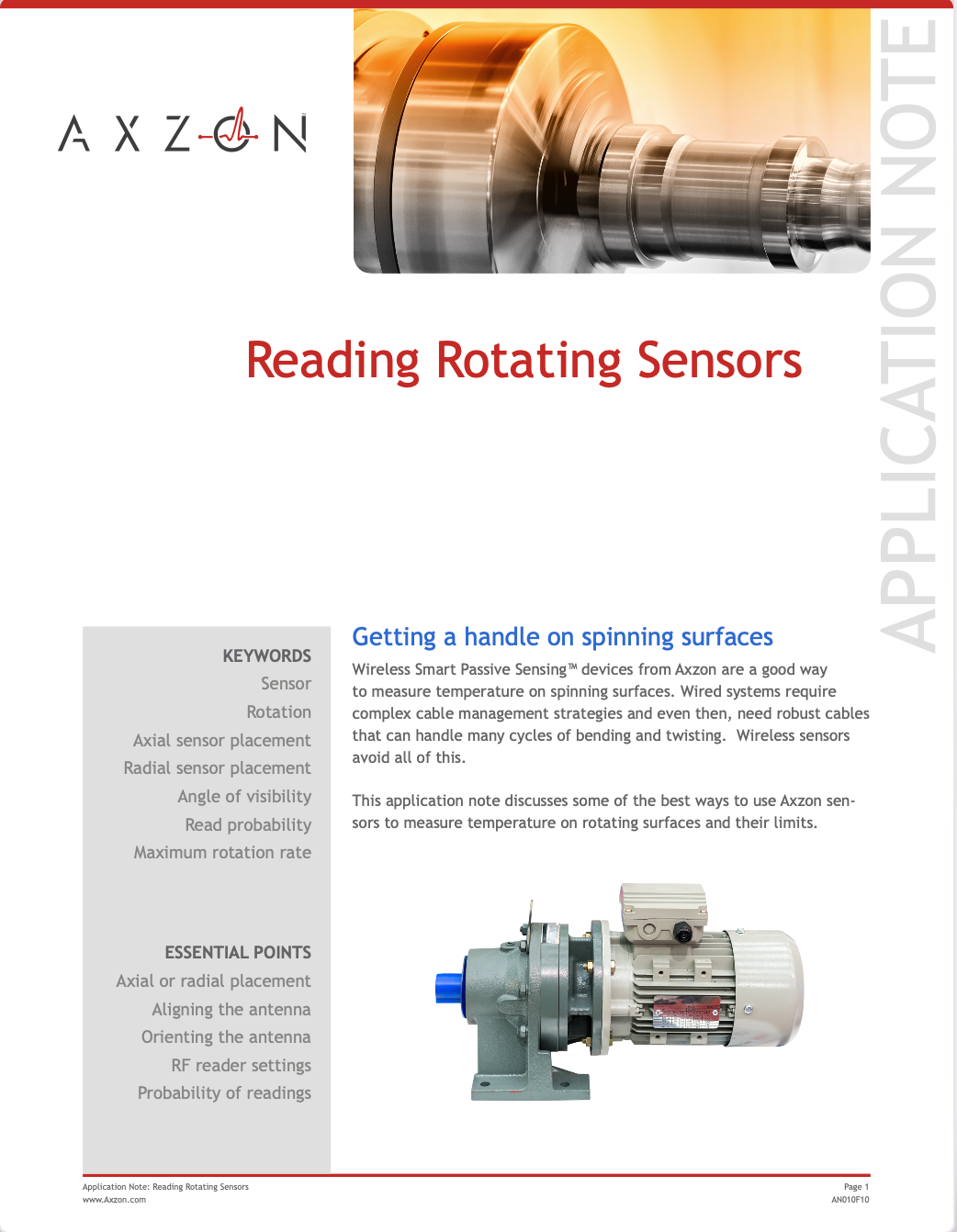
Reading Rotating Sensors
AN010: Wireless Smart Passive Sensing™ devices from Axzon are a good way to measure temperature on spinning surfaces. Wired systems require complex cable management strategies and even then, need robust cables that can handle many cycles of bending and twisting. Wireless sensors avoid all of this. This application note discusses some of the best ways to use Axzon sensors to measure temperature on rotating surfaces and their limits.
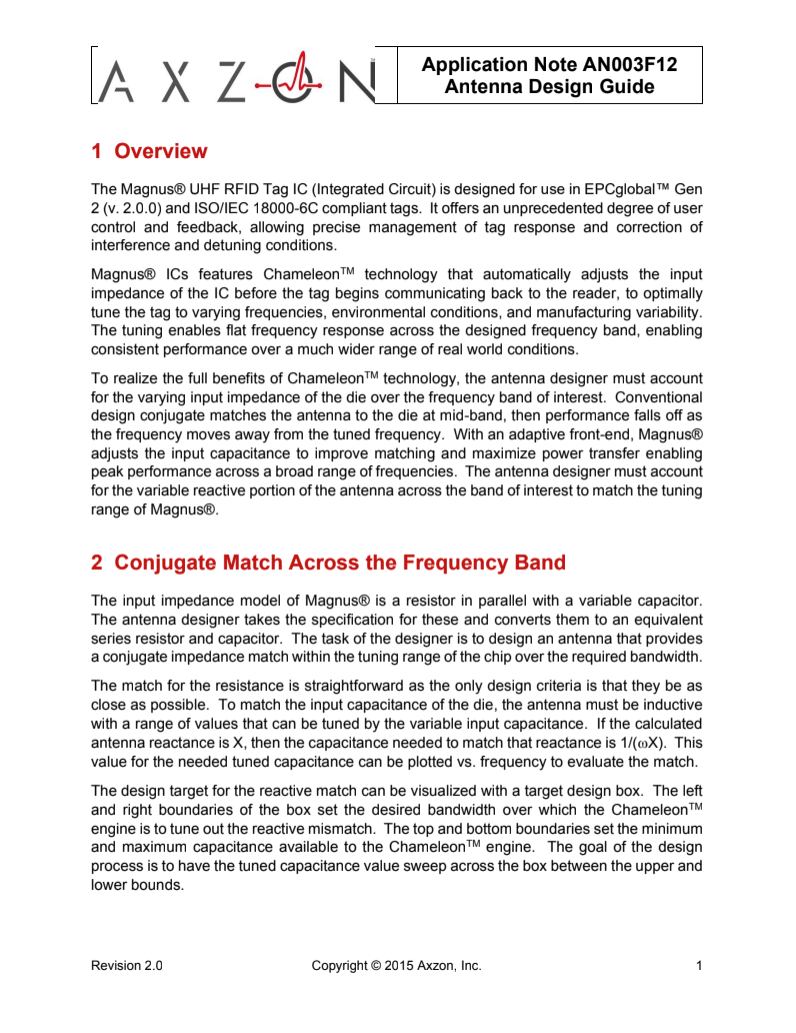
Antenna Design Guide
The Magnus® UHF RFID Tag IC (Integrated Circuit) is designed for use in EPCglobalTM Gen 2 (v. 2.0.0) and ISO/IEC 18000-6C compliant tags. It offers an unprecedented degree of user control and feedback, allowing precise management of tag response and correction of interference and detuning conditions.
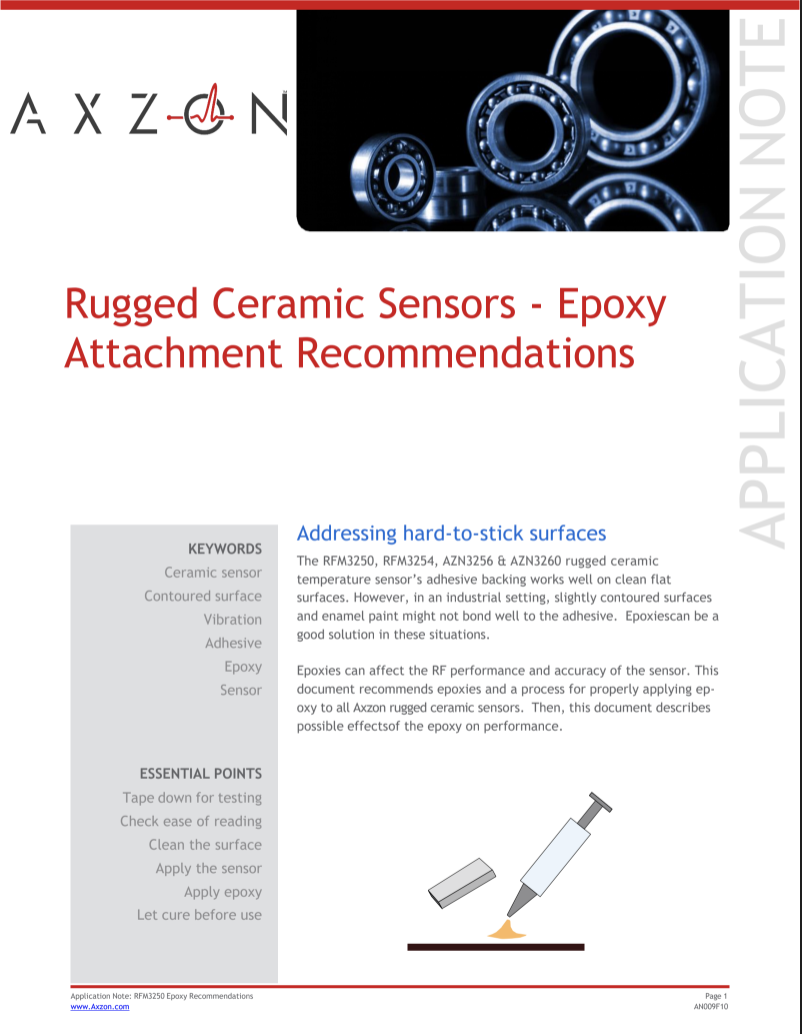
Rugged Ceramic Sensors - Epoxy Attachment Recommendations
AN009: The adhesive backing used on our rugged ceramic temperature sensors works well on clean flat surfaces. However, the adhesive used may not adhere sufficiently in an industrial setting, particularly on slightly irregular or painted surfaces. Additional epoxy adhesives can be a good solution in these situations. As some epoxies can affect the RF performance and accuracy of the sensor, this document makes recommendations on epoxies and a process for correctly applying any Axzon rugged ceramic
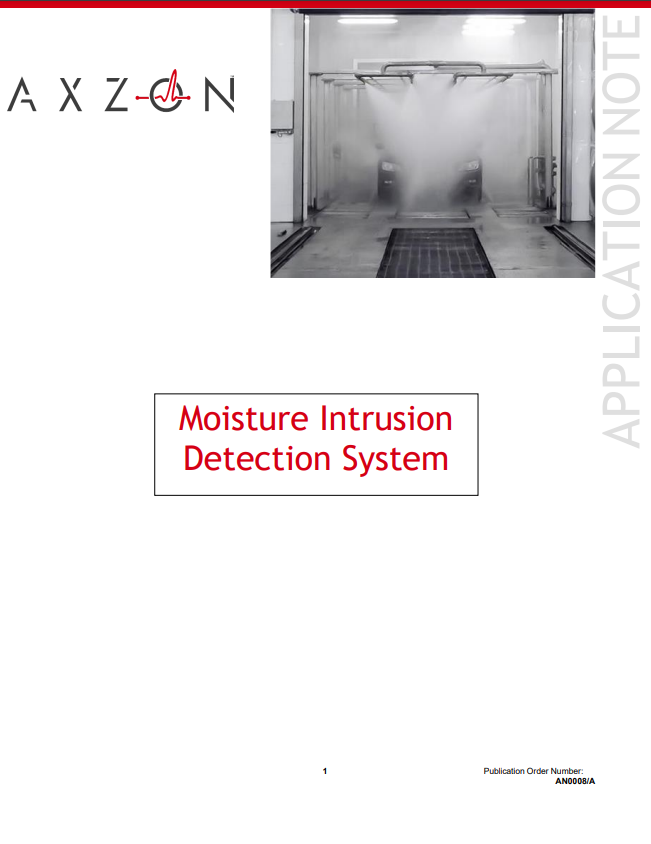
AXZON Moisture Detection System
Cost Effective Identification of Vehicle Water Leaks.
Water leaks in vehicles can be a costly failure, potentially leading to
recalls, repairs, and damage to brand reputation. “Water Leaks” have plagued
the auto industry for years. About 3% of new vehicles leave the factory with
leaks large enough to cause mold growth and damage to expensive electronic
components. Detecting assembly issues and the leaks they trigger before a
vehicle leaves the factory is critical to improving outgoing quality and
avoiding customer warranty issues that lead to costly recalls.
